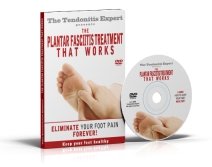|
Carpel Tunnel Symptoms
And while they may diminish, you can expect them to return, because the problem slowly continues to get worse even while your body fights it off. Carpel Tunnel Symptoms can come and go, or be constant. They can be mild or severe. Symptoms can be very similar to
Wrist Tendonitis Symptoms.
If you want to get rid of your symptoms and fix the problem that is causing them, get
The Carpel Tunnel Treatment That Works. 
$39.99 plus S&H. Shipped within 48 hours. Secure transaction. Money Back Guarantee!
Carpel Tunnel Syndrome, like all syndromes, is nothing but a label for a collection of symptoms. So just because you have Carpal Tunnel Syndrome Symptoms doesn't necessarily mean that you have a Carpel Tunnel problem. However, that is an entirely different conversation. Let's look at the Symptoms themselves, and what they mean.
Symptoms of Carpel Tunnel Syndrome
Carpel Tunnel Symptoms can be scary. They hurt, and they feel....'real'. Numbness is likely the scariest of all the Carpel Tunnel Syndrome symptoms. As the dynamic of this particular symptom progresses, one can expect to get numbness and/or tingling in the fingers and even in the hand. That's because the median nerve that passes through the carpal tunnel feeds the thumb and first three fingers, and part of the hand. If you have numbness/tingling in your ring and pinky finger, this is because the cubital nerve that passes through the rear of your elbow is compressed. This causes a syndrome called Cubital Tunnel Syndrome (page to be added). When you have numbness/tingling again and again, or when it stops going away, it is normal to begin to worry that you are at risk for Nerve Damage. Fortunately the overwhelming majority of people with numbness/tingling in their fingers do not actually get 'nerve damage', even if it has been numb for long periods of time. In a decade of practice, I have yet to see a case of 'permanent' nerve damage. As soon as the compression of the nerve is reduced, feeling starts coming back. People with Carpel Tunnel symptoms are amazed by how fast and how much of the numbness and tingling go away when the direct and indirect causes of the compression are dealt with. Even if they have had Carpel Tunnel symptoms for years and years. Having said that, the last remnants of numbness can take quite a while to get back to 'normal' if the compression has been severe, and/or for long periods of time. People have been conditioned to think that they have a major problem on their hands (pun intended). And they do, unless they get access to the RIGHT information. For a discussion on numbness and surgery, visit the Carpel Tunnel Surgery and the Carpel Tunnel Surgery Statistics. The question becomes, where is the nerve being compressed? The wrist? Or the forearm? The shoulder and front of the chest? The neck? Or all of the above? It seems that doctors do not take into account that nerve conduction can be reduced from areas other than the wrist(and they are not the only profession to overlook this). * Shooting pain into the hand, sometimes up the arm Shooting pain is the rarest of Carpel Tunnel symptoms. This means your body gets more and more into a defensive mode. The shooting pain is from short intense spasms of already severely tight, painful, unhappy muscles. Consider that your body is trying to keep you safe from future harm. Ironically, the way it does that is by causing you pain. Essentially, your body is trying to keep you from moving, in the hopes that you stop causing yourself more pain. Again, the irony, it uses more pain to do that. Unfortunately, there's more to the story.
The Pain Causing Dynamic is constant and deeply ingrained by the time you experience pain. It takes something to reverse it. Primarily, you don't want to stop doing the activities that you love, or that you must do for work. There is information throughout this website that can help you. The best way I've found to get your body out of pain and back to healthy function, is to visit my Tendonitis DVD page. * Wrist Pain and/or Hand Pain Pain in the hand and wrist is one of the 'worst' Carpel Tunnel symptoms. Pain in the hand and pain in the wrist can show up differently for different people. It can be burning, aching, sharp or dull, constant or recurring. Normally, the onset of pain happens slowly over time, comes and goes, and gets worse as you continue to do the same activities that made it start hurting in the first place. Then it gets so bad that you realize that you have a problem that isn't going to go away. It is likely that you also have tightness and pain in your forearms, front of your shoulders and your upper back. If you press your fingers or thumb into the muscles in your thumb pad, you will likely find them to be -very- tender. * Loss of hand strength This can be a very distressing symptom. As the nerve that feeds the arm, hand, and fingers gets more and more compressed by tight muscles, the nerve is less able to operate at full capacity. Kind of like stepping on a hose, it slows or stops the flow of water. You may be experiencing a barely noticeable decrease, or a severe loss of strength. This loss of strength may mean that you drop small items, have a hard time handling objects, or you notice you just aren't gripping like you should be. You may find it impossible to open a jar. Immediately as you open up the structures that are adding compression to the nerve, strength will begin to return. As you will see me say repeatedly throughout this site, it is rare that nerve compression happens –only- at the carpal tunnel. Carpel Tunnel Symptoms are caused by an entire dynamic of muscle tightness, tissue shortening, and pain that results from that. Loss of hand strength might also look like increased pain when trying to use your hands, like pain when trying to hold a cup or squeeze your fingers together. This pain can be, but for the most part is not directly due to nerve compression. It is due to the many other factors like muscle tightness and inflammation that are working together to make your structure very unhappy. * Decreased range of motion Of all the Carpel Tunnel Symptoms, decreased range of motion is the one that people notice least. We just get used to being able to move less and less. It becomes normal, and we just don't notice. Muscles and connective tissue get tight, restricting our range a little. Then a little more, then a little more. This causes some degree of tenderness or pain in the body. In an attempt to protect you from pain, muscle and connective tissue get tight, more and more. This constricts the mobility of your wrist, fingers, and even your elbow joint. Imagine wrapping your wrist tightly in saran wrap. Then imagine trying to move it around. Essentially, the same thing is happening as your tissue shrink- wraps itself down around your bones. WARNING! When your muscles are tight they compress your joints. As your hands and arm hurt more and more, your muscles are getting tighter and tighter. This means your wrist joint is getting compressed, and your finger joints are getting compressed. To some degree the joint is basically grinding when you move your wrist around. You are grinding your little finger joints when you are moving them around. When you sleep at night, the joints are still compressed because your muscles stay tight. All that pressure and grinding causes the body to try and protect itself. This can look like 'getting Arthritis'. Technically, Arthritis isn't one of the symptoms of Carpel Tunnel. But over the long term, I say the medical community should start looking at Carpel Tunnel Syndrome, and Wrist Tendonitis, as a precursor to Arthritis in the wrist and fingers. Carpal Tunnel Symptoms |
| Share Your Story |





